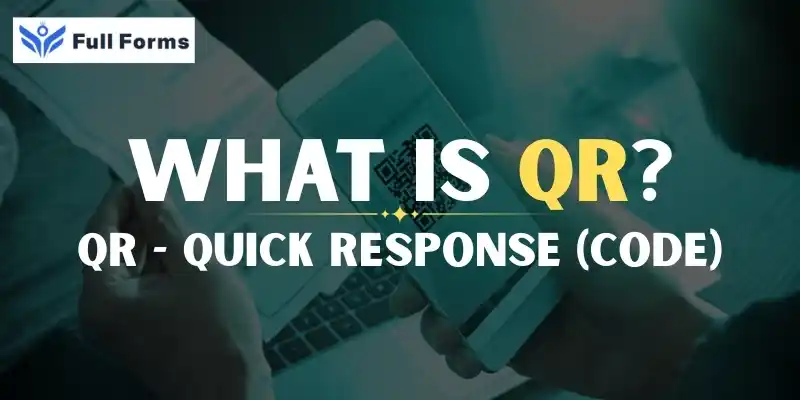Quick Response (code)
(QR)

Description
Quick Response (QR) Code: In Simple Terms
In today's fast-paced digital world, you might have seen small black-and-white square boxes on menus, tickets, posters, and product packages. QR codes, or quick response codes, are what people call these. They may seem hard to use at first, but they are very simple and helpful tools that make life easier.
What is a code that starts with QR?
A QR code is a two-dimensional barcode that stores information. It can keep links to websites, phone numbers, product information, payment instructions, and a lot more. QR codes are short for "quick response," which means that a smartphone or QR scanner can quickly scan them.
You can read QR codes from the top to the bottom and the left to the right. This means that they can hold a lot more information than regular barcodes, which can only be read from side to side.
A Brief History
Denso Wave, a Japanese company that is part of Toyota, made the QR code in 1994. The car industry was the first to use it to keep track of parts. QR codes became popular in many other fields over time because they are easy to read and can hold a lot of information.
What does a QR code do?
A QR code is a white background with black squares on it. You can scan the code with your phone's camera or a special QR code scanner. This breaks down the pattern and shows or does what the code says.
- If the code has a link to that page, your phone will open it.
- If it saves your payment information, your payment app will open with the name of the person who will get it and the amount.
- If it saves text, it will only show the message.
How to Use QR Codes
People use QR codes in many different ways. Some of the most common ways to use them are:
- Payments: You can send or get money by scanning a QR code with apps like Paytm, Google Pay, or PhonePe.
- Marketing: Businesses put QR codes on flyers, posters, and ads to get people to go to their website or take advantage of their deals.
- Restaurants: Use QR codes to show menus on your phone instead of paper menus.
- Tickets and Events: QR codes are used to send e-tickets for concerts, movies, and flights.
- Product Details: Scan a product’s QR code to see its price, ingredients, or reviews.
- Wi-Fi Sharing: Some routers let guests join by scanning a QR code.
- Education: Teachers add QR codes to notes or books for extra content.
The Good Things About QR Codes
- Fast and Easy: Just scan with your camera to access information instantly.
- Touch-Free: Perfect during health emergencies like COVID-19.
- Cost-Effective: Businesses can generate them for free, saving print costs.
- Storage: QR codes can store links, text, numbers, images, and small files.
Are QR Codes Secure?
Yes, most of the time. But like any other technology, QR codes can be misused. Some QR codes can send you to fake websites or install malware. Stay safe with these tips:
- Only scan QR codes from trusted sources.
- Don’t install unknown apps after scanning.
- Use your phone’s official scanner or browser preview first.
Making a QR Code for Yourself
It's very easy to make a QR code. Online tools let you generate QR codes for free. Just type in the information you want to share, like a link or message, and the site will make a code for you. You can download and use it on your business cards, websites, posters, etc.
Last Thoughts
Every day, people use QR codes to make things easier and faster. QR codes are now a part of our everyday lives. We use them to pay bills, order food, share contact info, and get on Wi-Fi networks. They are simple to make, simple to use, and work right away. As the world becomes more digital, QR codes are likely to become more popular. This will help everyone get things done faster and easier.
